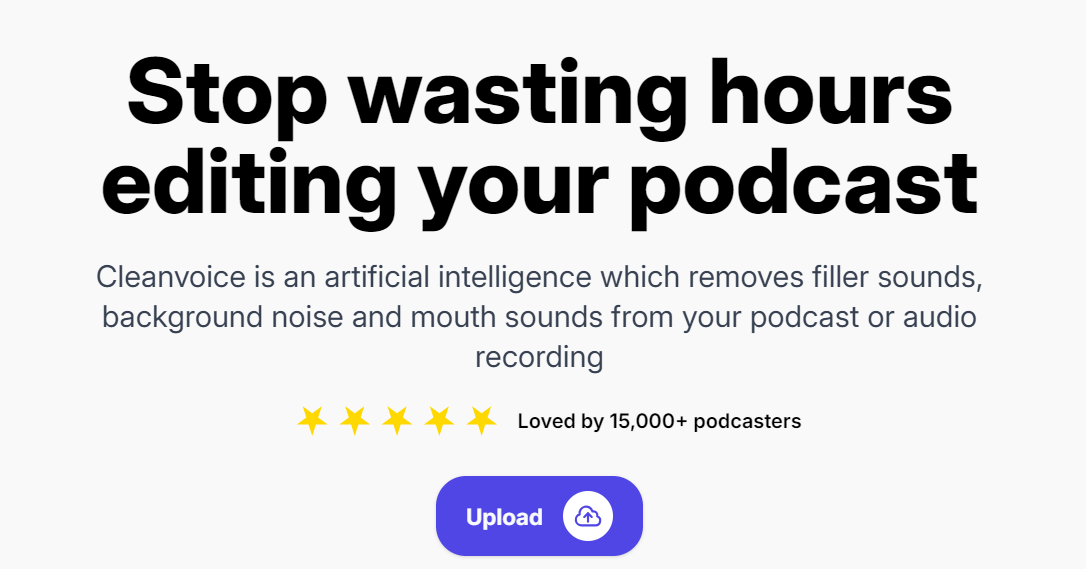Harnessing AI To Create A "Poop" Podcast From Tedious Documents

Table of Contents
Identifying the Right AI Tools for Podcast Creation
The first step in using AI for podcast production is identifying the right tools. Several AI-powered solutions can streamline the entire process, from data analysis to audio editing.
Natural Language Processing (NLP) for Data Analysis
Natural Language Processing (NLP) is crucial for making sense of large text datasets. NLP tools can analyze research papers, medical journals, and other complex documents to identify key themes, insights, and compelling storylines. These tools perform tasks like sentiment analysis (understanding the emotional tone of text) and topic modeling (identifying recurring topics within a dataset).
- Example 1: An NLP tool could analyze a collection of scientific papers on gut health, identifying key findings and controversies to build a structured podcast episode.
- Example 2: Sentiment analysis can help determine the overall tone of research, allowing you to present information accurately and engagingly, highlighting both positive and negative findings.
- Specific NLP tools: SpaCy, NLTK, and Stanford CoreNLP offer various NLP capabilities.
Text-to-Speech (TTS) for Podcast Production
Once your data is analyzed and structured, you need to convert it into audio. Text-to-Speech (TTS) technology allows you to automatically generate audio from written transcripts, significantly reducing the time and effort required for recording and editing.
- Importance of quality: Choosing a high-quality TTS engine is paramount. A natural-sounding voice enhances listener engagement.
- Considerations for selecting a TTS engine:
- Voice quality and naturalness
- Pronunciation accuracy for technical terminology
- Intonation and expression to maintain listener interest.
- Popular TTS engines: Amazon Polly, Google Cloud Text-to-Speech, and Microsoft Azure Text-to-Speech are popular choices.
AI-Powered Editing and Enhancement Tools
AI is also transforming audio editing. Tools now exist that can automatically remove background noise, optimize audio levels, and even enhance the overall sound quality of your podcast.
- Benefits of AI-powered audio editing:
- Increased efficiency – automating tedious editing tasks.
- Improved audio quality – leading to a more professional sound.
- Reduced workload – freeing up time to focus on other aspects of podcast production.
- Examples of AI-powered audio editing tools: Descript, Adobe Audition (with AI features), and Audacity (with plugins).
Structuring Your Podcast using AI-Generated Insights
AI doesn't just analyze data; it can also help structure your podcast. The insights generated by NLP and other AI tools can inform the narrative arc of your episodes.
Creating a Compelling Narrative from Data
AI-generated insights provide a logical framework for your podcast. Instead of a random collection of facts, AI helps create a cohesive and engaging story.
- Example: An AI might identify a key finding from your data and suggest it as the central theme of an episode.
- Tips for crafting a narrative arc:
- Start with a compelling hook.
- Develop the story logically, using data points as evidence.
- Include a satisfying conclusion that summarizes key takeaways.
Identifying Target Audience and Tailoring Content
Understanding your audience is critical. AI can analyze listener demographics and preferences to help tailor your content for maximum impact.
- Tools for audience analytics: Podcast hosting platforms often provide data on listener demographics and listening habits.
- Strategies for using AI to target specific demographics: You can use AI to analyze listener comments and reviews to understand what resonates with your audience and adjust future content accordingly.
Overcoming Challenges and Best Practices
While AI offers significant advantages, it's important to address potential challenges.
Ensuring Accuracy and Fact-Checking
AI is a tool, not a replacement for human judgment. Always fact-check AI-generated information to ensure accuracy.
- Steps to ensure reliability:
- Cross-reference information from multiple sources.
- Consult with subject matter experts.
- Review and edit AI-generated content before publication.
Maintaining a Human Touch
While AI handles many technical aspects, a human touch is crucial for maintaining authenticity and engagement.
- Balancing automation and human intervention:
- Use AI for data analysis and audio production.
- Maintain human oversight for storytelling, editing, and fact-checking.
- Incorporate your unique voice and perspective to create a memorable listening experience.
Unlocking the Power of AI for Your Podcast
Leveraging AI for podcast creation from complex data offers significant benefits: increased efficiency, improved content quality, and targeted audience reach. AI tools can streamline the entire process, from data analysis to audio editing, saving you valuable time and effort. Start harnessing the power of AI to transform your tedious documents into captivating podcasts today!

Featured Posts
-
 Suki Waterhouse Channels Grandma Chic In Valentino
May 20, 2025
Suki Waterhouse Channels Grandma Chic In Valentino
May 20, 2025 -
 Delving Into The Cases Of Agatha Christies Poirot
May 20, 2025
Delving Into The Cases Of Agatha Christies Poirot
May 20, 2025 -
 Angely I Restorany Biznes Plyuschenko Sikharulidze I Kuznetsovoy
May 20, 2025
Angely I Restorany Biznes Plyuschenko Sikharulidze I Kuznetsovoy
May 20, 2025 -
 Amorims Major Forward Signing A Game Changer For Man Utd
May 20, 2025
Amorims Major Forward Signing A Game Changer For Man Utd
May 20, 2025 -
 How A Billionaire Boy Achieved Success Strategies And Insights
May 20, 2025
How A Billionaire Boy Achieved Success Strategies And Insights
May 20, 2025
